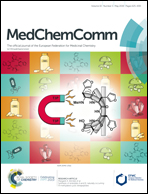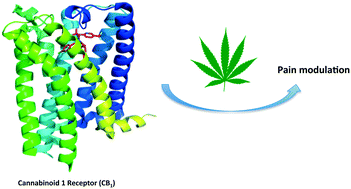
“Cannabis has been used for pain relief and to promote sleep for thousands of years. Over the past several decades in the United States (U.S.), a therapeutic role for cannabis in mainstream medicine has increasingly emerged. Medical cannabis patients consistently report using cannabis as a substitute for prescription medications. Both pain relief and sleep promotion are common reasons for cannabis use, and the majority of respondents who reported using cannabis for these reasons also reported decreasing or stopping their use of prescription or over-the-counter analgesics and sleep aids. While adult-use laws are frequently called “recreational,” implying that cannabis obtained through the adult use system is only for pleasure or experience-seeking, our findings suggest that many customers use cannabis for symptom relief.”
https://www.ncbi.nlm.nih.gov/pubmed/31264536
https://www.tandfonline.com/doi/full/10.1080/02791072.2019.1626953
“Cannabis Is An Effective Treatment Option For Pain Relief And Insomnia, Study Finds” https://www.inquisitr.com/5509672/cannabis-pain-medications-sleep/


 “Accumulating evidence supports the role of the cannabinoid system in providing an antinociceptive effect in various painful conditions.
“Accumulating evidence supports the role of the cannabinoid system in providing an antinociceptive effect in various painful conditions. “The cannabinoid receptor CB1 is involved in modulation of neuronal hypersensitivity and pain. The aim of this study was to evaluate CB1 receptor levels for the first time in dental pain. A total of 19 patients due for molar extraction were divided into two groups, those with existing dental pain (n=9), and those with no history of pain (n=10). Immunohistochemistry and computer image analysis was used to evaluate CB1-positive nerve fibres in tooth pulp, with neurofilament-immunostaining as a structural nerve marker. CB1-immunoreactive nerve fibres were scattered throughout the tooth pulp and often seen in nerve bundles, but the fibres did not penetrate the subodontoblastic layer. There was no statistically significant change in the CB1 nerve fibre percentage area in the painful group compared to the non-painful group (p=0.146); the neurofilament fibres were significantly reduced in the painful group compared to the controls (p=0.028), but there was no difference in the ratio of CB1 to neurofilaments between the two groups. Thus, CB1 expression is maintained by nerve fibres in painful human dental pulp, and peripherally-restricted CB1 agonists currently in development may advance the treatment of dental pain.”
“The cannabinoid receptor CB1 is involved in modulation of neuronal hypersensitivity and pain. The aim of this study was to evaluate CB1 receptor levels for the first time in dental pain. A total of 19 patients due for molar extraction were divided into two groups, those with existing dental pain (n=9), and those with no history of pain (n=10). Immunohistochemistry and computer image analysis was used to evaluate CB1-positive nerve fibres in tooth pulp, with neurofilament-immunostaining as a structural nerve marker. CB1-immunoreactive nerve fibres were scattered throughout the tooth pulp and often seen in nerve bundles, but the fibres did not penetrate the subodontoblastic layer. There was no statistically significant change in the CB1 nerve fibre percentage area in the painful group compared to the non-painful group (p=0.146); the neurofilament fibres were significantly reduced in the painful group compared to the controls (p=0.028), but there was no difference in the ratio of CB1 to neurofilaments between the two groups. Thus, CB1 expression is maintained by nerve fibres in painful human dental pulp, and peripherally-restricted CB1 agonists currently in development may advance the treatment of dental pain.”
 “Much of the opioid epidemic arose from abuse of prescription opioid drugs.
“Much of the opioid epidemic arose from abuse of prescription opioid drugs. “The endocannabinoid system (ECS) is an extensive endogenous signaling system with multiple elements, the number of which may be increasing as scientists continue to elucidate its role in human health and disease. The ECS is seemingly ubiquitous in animal species and is modulated by diet, sleep, exercise, stress, and a multitude of other factors, including exposure to phytocannabinoids, like
“The endocannabinoid system (ECS) is an extensive endogenous signaling system with multiple elements, the number of which may be increasing as scientists continue to elucidate its role in human health and disease. The ECS is seemingly ubiquitous in animal species and is modulated by diet, sleep, exercise, stress, and a multitude of other factors, including exposure to phytocannabinoids, like 


 “Chronic pain may be treated by medical cannabis. Yet, there is scarce evidence to support the role of medical cannabis in the treatment of fibromyalgia. The aim of the study was to investigate the characteristics, safety, and effectiveness of medical cannabis therapy for fibromyalgia.
“Chronic pain may be treated by medical cannabis. Yet, there is scarce evidence to support the role of medical cannabis in the treatment of fibromyalgia. The aim of the study was to investigate the characteristics, safety, and effectiveness of medical cannabis therapy for fibromyalgia.